Auras have long been studied and revered for their ability to provide insight into our emotional and spiritual energy. From vibrant blues and greens to fiery reds and passionate yellows, each color within the aura carries its own significance. But what about the enigmatic gray aura?
The gray aura is often misunderstood, but it holds valuable meaning and insights into an individual’s journey. Whether dark or light, the shade of gray in an aura can reveal different emotional states and experiences. While a darker gray may signify pessimism and confusion, a lighter gray suggests a search for hope and light.
It’s important to note that a gray aura is not inherently bad, but rather a reflection of the emotional state and experiences of the individual. By understanding the nuances of the gray aura, we can gain a deeper understanding of ourselves and others.
Key Takeaways:
- The gray aura holds important insights about an individual’s emotional state and experiences.
- The shade of gray within the aura can vary from dark to light, indicating different emotional states.
- A darker gray may signify pessimism and confusion, while a lighter gray suggests a search for hope and light.
- A gray aura is not inherently bad, but rather a reflection of the emotional state and experiences of the individual.
- Understanding the meaning and symbolism of different aura colors can help us gain a deeper understanding of ourselves and others.
Understanding Auras: What Are They?
Auras are invisible energy fields that surround the human body, providing valuable insights into a person’s emotional and physical state. These energy fields, also known as the aura, can be seen and interpreted by those with the ability to read auras. Each color within the aura corresponds to one of the body’s chakras, which are the energy centers in our bodies.
The aura colors, ranging from vibrant and bright to subtle and muted, reflect the individual’s emotional well-being, spiritual energy, and state of mind. These colors can change and fluctuate based on various factors, including emotions, physical health, and the energy of others.
Understanding auras and their colors can provide a deeper understanding of oneself and others. By recognizing the colors within our auras and their associations with different aspects of our lives, we can gain insights into our own emotional states and overall well-being.
How Auras and Chakras Interact
The aura colors are closely connected to the body’s chakras, or energy centers. These seven main chakras are located along the spine and each corresponds to a specific color:
- Root Chakra (Red): The root chakra represents our sense of safety, security, and stability.
- Sacral Chakra (Orange): The sacral chakra is associated with creativity, sexuality, and passion.
- Solar Plexus Chakra (Yellow): The solar plexus chakra is connected to personal power, confidence, and self-esteem.
- Heart Chakra (Green): The heart chakra is associated with love, compassion, and emotional well-being.
- Throat Chakra (Blue): The throat chakra represents communication, self-expression, and truth.
- Third Eye Chakra (Indigo): The third eye chakra is linked to intuition, insight, and spiritual awareness.
- Crown Chakra (Violet or White): The crown chakra represents our connection to the divine, higher consciousness, and enlightenment.
The colors of the aura can reveal how balanced or imbalanced these chakras are and provide valuable information about our overall energy and spiritual health.
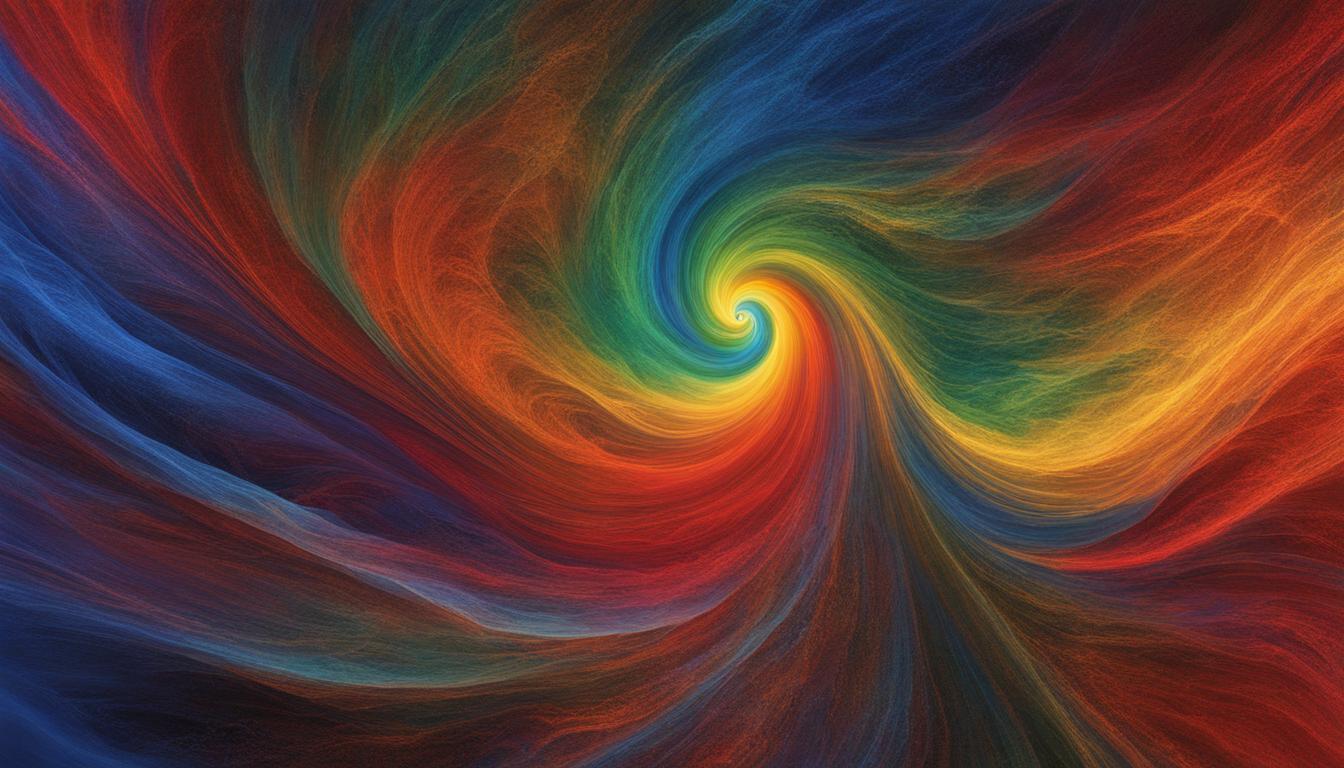
There is much more to learn about auras and the fascinating world of energy fields that surround us. In the next section, we will explore the connection between auras and health, shedding light on how aura colors can offer insights into an individual’s well-being and vitality.
The Connection Between Health and Aura Colors
Aura colors are deeply connected to an individual’s health. The colors within the aura can provide valuable insights into a person’s overall well-being. Bright and clear aura colors, such as green or blue, indicate good health and balance. On the other hand, dark or muddy colors may suggest low energy levels and poor health.
An individual’s aura reflects their emotional state and energy field. By understanding and interpreting the colors within the aura, we can gain a deeper understanding of a person’s health and wellness.

The vibrant hues of green and blue in an aura signify vitality and equilibrium. These colors are associated with a healthy physical body and a balanced emotional state. They represent a person’s ability to handle stress and adapt to challenges while maintaining overall well-being.
Conversely, dark or muddy colors within the aura may indicate imbalances or low energy levels. These colors can be reflective of physical or emotional health issues. It is crucial to pay attention to these colors, as they can serve as warning signs of potential health concerns.
By recognizing and addressing imbalances within the aura, we can take proactive steps to improve our overall health. This can include engaging in practices such as meditation, energy healing, and self-care.
The Science Behind Auras
While auras cannot be seen with the naked eye, some trained individuals can perceive them. Auras are believed to be energy fields that reflect an individual’s physical and emotional state.
Scientifically, auras are associated with mood and the mind-body connection. The colors within an aura can indicate an individual’s emotional state, such as happiness, sadness, or wellness.
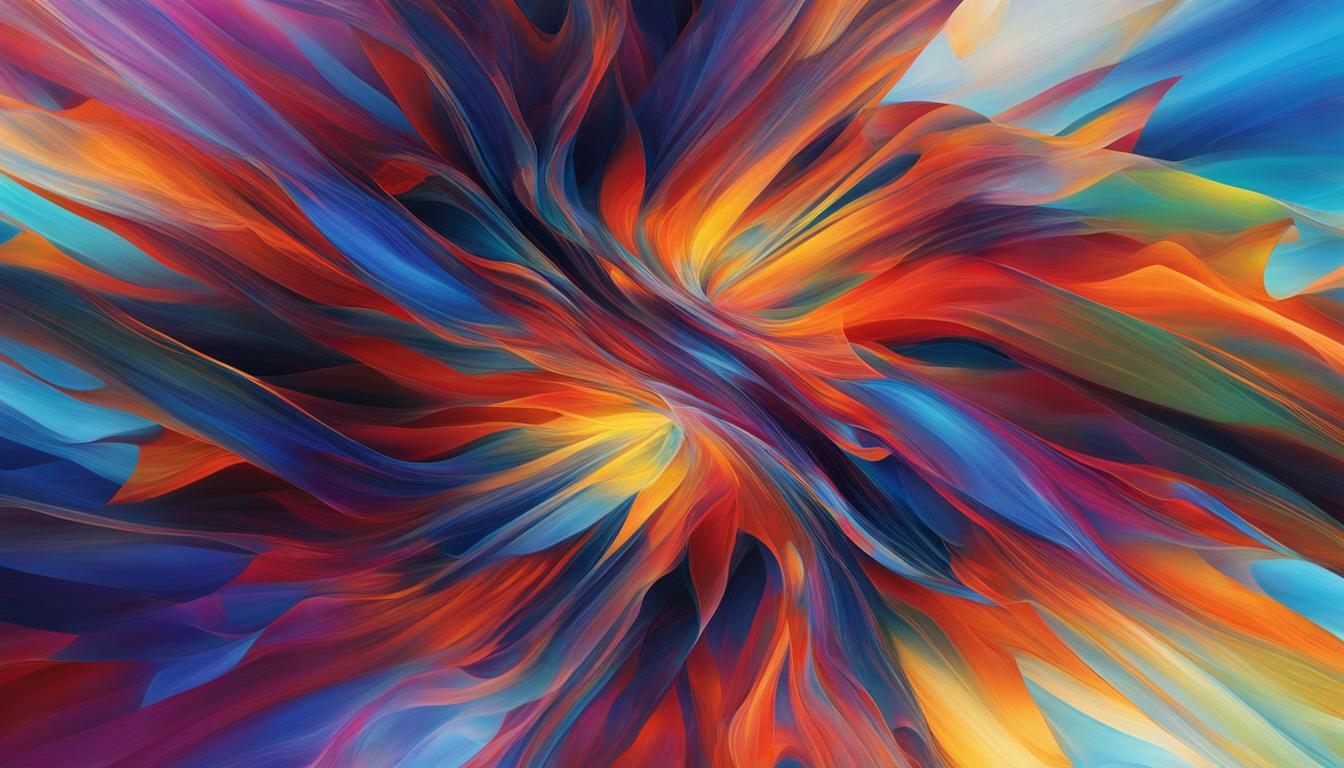
Auras are fascinating phenomena that provide insights into the intricate connection between our physical state and our mind. They are believed to be energy fields that surround individuals, reflecting their emotional state and overall well-being.
While auras cannot be directly seen by most people, some individuals with specialized training have the ability to perceive and interpret them. These energy fields are strongly associated with mood and the mind-body connection.
The colors within an aura can provide valuable information about an individual’s emotional and mental state. Bright and vibrant colors often indicate a positive emotional state, while dark or dull colors may suggest low energy levels or emotional distress.
The study of auras and their scientific basis is an ongoing area of research. Scientists are exploring the connection between auras and the body’s electromagnetic energy, as well as how they are influenced by emotions, thoughts, and even physical health.
Understanding the science behind auras can deepen our appreciation for the intricate interplay between our physical and mental states. It reminds us of the complexity of human beings and the energy that surrounds us.
In the next section, we will explore various techniques and tips for seeing auras, allowing us to tap into this fascinating aspect of human existence.
How to See Auras: Techniques and Tips
Seeing auras can provide valuable insights into a person’s energy and emotional state. While it may take practice and focus, anyone can develop the ability to perceive and interpret auras. Here are some techniques and tips to help you enhance your aura perception:
Relax Your Eyes
Relaxing your eyes is essential when attempting to see auras. Soften your gaze and avoid straining your eyes to focus. Allow your vision to become more receptive to subtle shifts in energy.
Use Peripheral Vision
Using peripheral vision can help you catch glimpses of auras. Instead of fixating on a person or object directly, try looking slightly to the side and notice if you can detect any changes or colors in your peripheral vision.
Look for Shifts in Color or Light
When trying to see auras, pay attention to shifts in color or light around a person or object. Auras may appear as a subtle glow, halo, or bands of color surrounding the subject. Be patient and observant, as the aura may evolve or change over time.
Regular practice is key to developing your aura perception skills. Set aside dedicated time each day to engage in these techniques. As you become more attuned to the energy around you, you’ll increase your ability to see and understand auras.
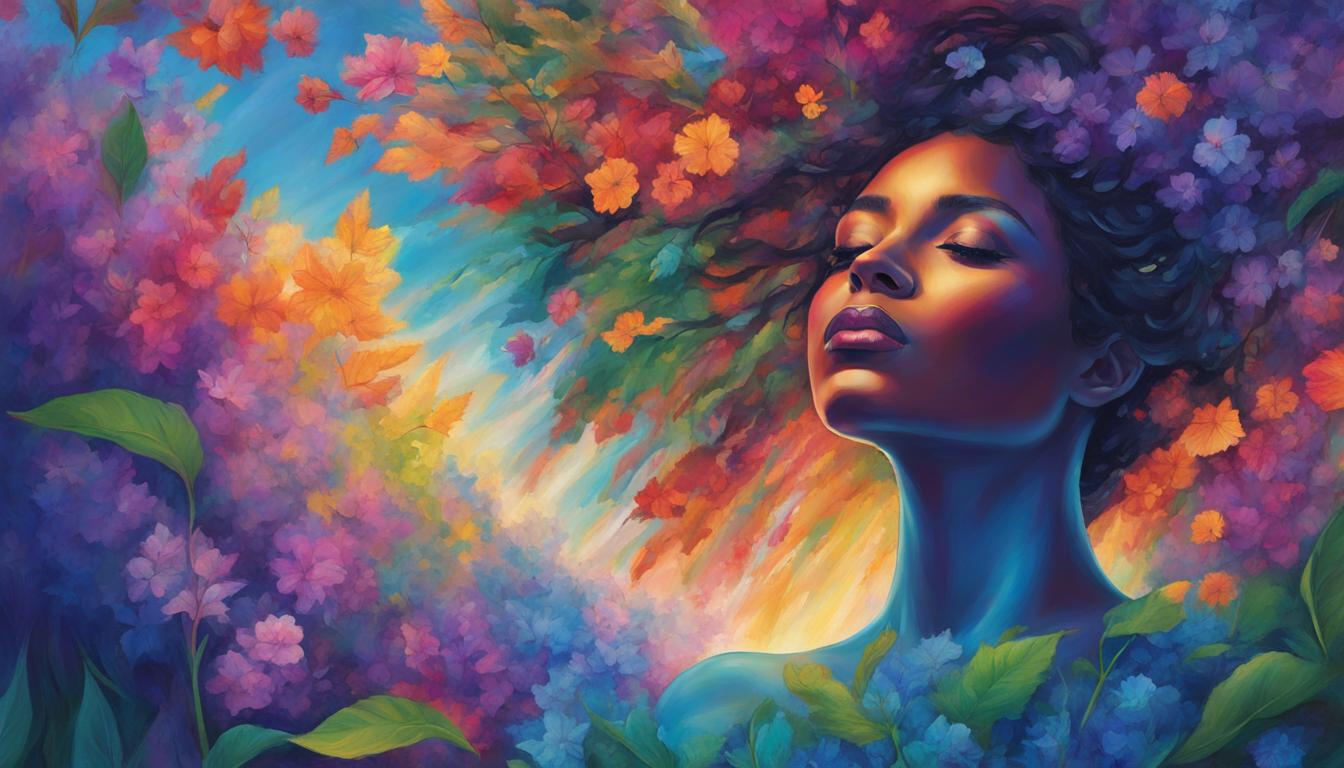
The Primary Aura Color Meanings
The primary aura colors have specific meanings and symbolism. Understanding these colors can provide valuable insights into an individual’s emotional state and energy. Let’s explore the meanings of each primary aura color:
Red Aura
A red aura signifies passion, energy, and vitality. People with a red aura are often driven, ambitious, and have a zest for life. They exude confidence and have a strong presence.
Pink Aura
A pink aura represents love, compassion, and nurturing energy. Individuals with a pink aura are kind-hearted, empathetic, and sensitive to the emotions of others. They radiate warmth and tenderness.
Blue Aura
A blue aura indicates serenity, calmness, and inner peace. People with a blue aura are often peaceful, balanced, and have a deep sense of spirituality. They possess excellent communication skills and are natural healers.
Yellow Aura
A yellow aura signifies positivity, intellect, and power. Individuals with a yellow aura are often optimistic, cheerful, and have a strong sense of self-confidence. They are intellectually sharp and have a zest for learning.
Orange Aura
An orange aura represents creativity, sensuality, and enthusiasm. People with an orange aura are often passionate, expressive, and have a zest for life. They have a magnetic personality and love to explore new experiences.
Indigo Aura
An indigo aura indicates intuition, spiritual insight, and deep wisdom. Individuals with an indigo aura are often highly intuitive, wise, and have a strong connection to their inner selves. They possess a deep sense of knowing.
Green Aura
A green aura represents nurture, growth, and healing. People with a green aura are often compassionate, empathetic, and have a strong desire to help others. They radiate love and have a natural affinity for nature.
Purple Aura
A purple aura signifies spirituality, consciousness, and higher awareness. Individuals with a purple aura are often deeply spiritual, intuitive, and have a strong connection to the divine. They possess a profound understanding of the universe.
Understanding the primary aura colors can help us interpret and connect with the energy around us. Each aura color holds unique insights into an individual’s personality and inner world. By recognizing and embracing these colors, we can navigate our lives with greater self-awareness and harmony.

Unique Aura Colors and Their Meanings
Discover the fascinating world of unique aura colors and their distinct meanings. Each color holds a special significance in understanding one’s energy and spiritual state.
White Aura: Balance and Calmness
When you see a white aura, it represents balance, serenity, and a calm state of being. It indicates a person who is grounded, at peace with themselves, and in a state of equilibrium.
Magenta Aura: Spirituality and Intuition
A magenta aura signifies a person’s deep spiritual connection and heightened intuitive abilities. Those with a magenta aura are often spiritually awakened individuals who possess a strong connection to their inner wisdom.
Silver Aura: Sensitivity and Intuition
A silver aura reflects sensitivity, intuition, and psychic abilities. People with a silver aura are highly perceptive and may possess strong empathic qualities that allow them to understand and connect with others on a deep level.
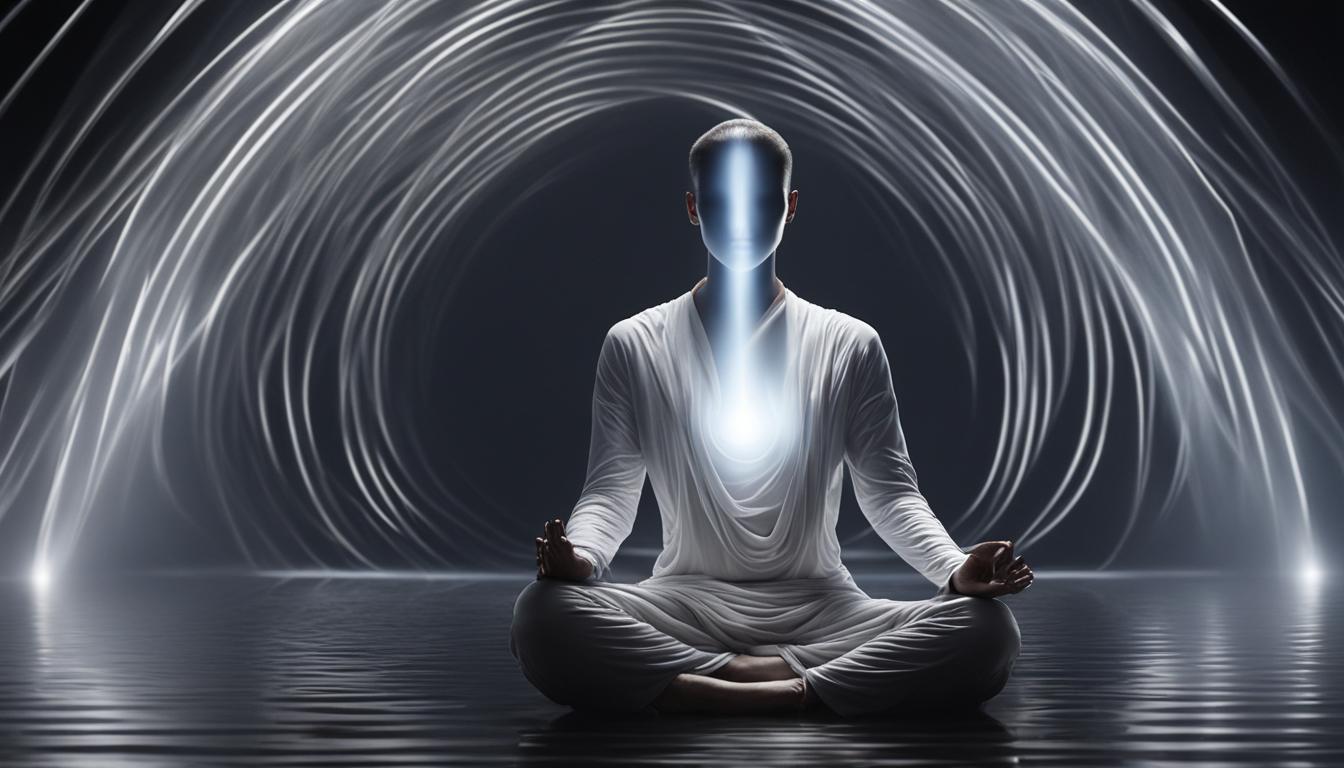
Gold Aura: Wisdom and Confidence
A gold aura symbolizes wisdom, confidence, and self-assuredness. Individuals with a gold aura possess a strong sense of inner power and radiate a magnetic energy that draws others towards them.
Crystal Aura: Balance and Harmony
A crystal aura represents a harmonious and balanced energy field. Those with a crystal aura are able to effortlessly maintain equilibrium in all aspects of their lives, creating a sense of peace and tranquility around them.
Brown Aura: Grounding and Practicality
A brown aura signifies grounding, practicality, and a strong connection to the physical world. Individuals with a brown aura are known for their down-to-earth nature, practical approach to life, and reliability.
Grey Aura: Low Energy and Sadness
A grey aura indicates low energy levels and a state of sadness. It suggests that an individual may be experiencing emotional turmoil or feeling drained energetically. It is important to address and uplift the grey aura to restore vitality and joy.
Combination of Aura Colors: What Does It Mean?
The combination of aura colors provides valuable insights into an individual’s energy and personality traits. Each combination conveys specific qualities that can help us understand a person’s character and outlook on life.
Take, for example, the combination of red and yellow. This vibrant duo signifies high energy and drive. Individuals with this combination are often motivated, passionate, and determined in their pursuits.
On the other hand, the pairing of blue and green represents emotional stability and compassion. Those with these colors in their aura tend to be empathetic, caring, and balanced in their interactions with others.
The combination of yellow and orange indicates confidence and charisma. People with these aura colors are often outgoing, sociable, and natural leaders. They have a magnetic personality that draws others to them.
Finally, the blend of purple and indigo symbolizes spiritual awareness and intuition. Individuals with these colors in their aura are often highly perceptive, insightful, and attuned to their inner guidance.
The combination of aura colors is like a unique fingerprint, offering a deeper understanding of an individual’s energy and characteristics. It allows us to see the intricate interplay of different traits and qualities within a person’s aura, painting a more holistic picture of who they are.
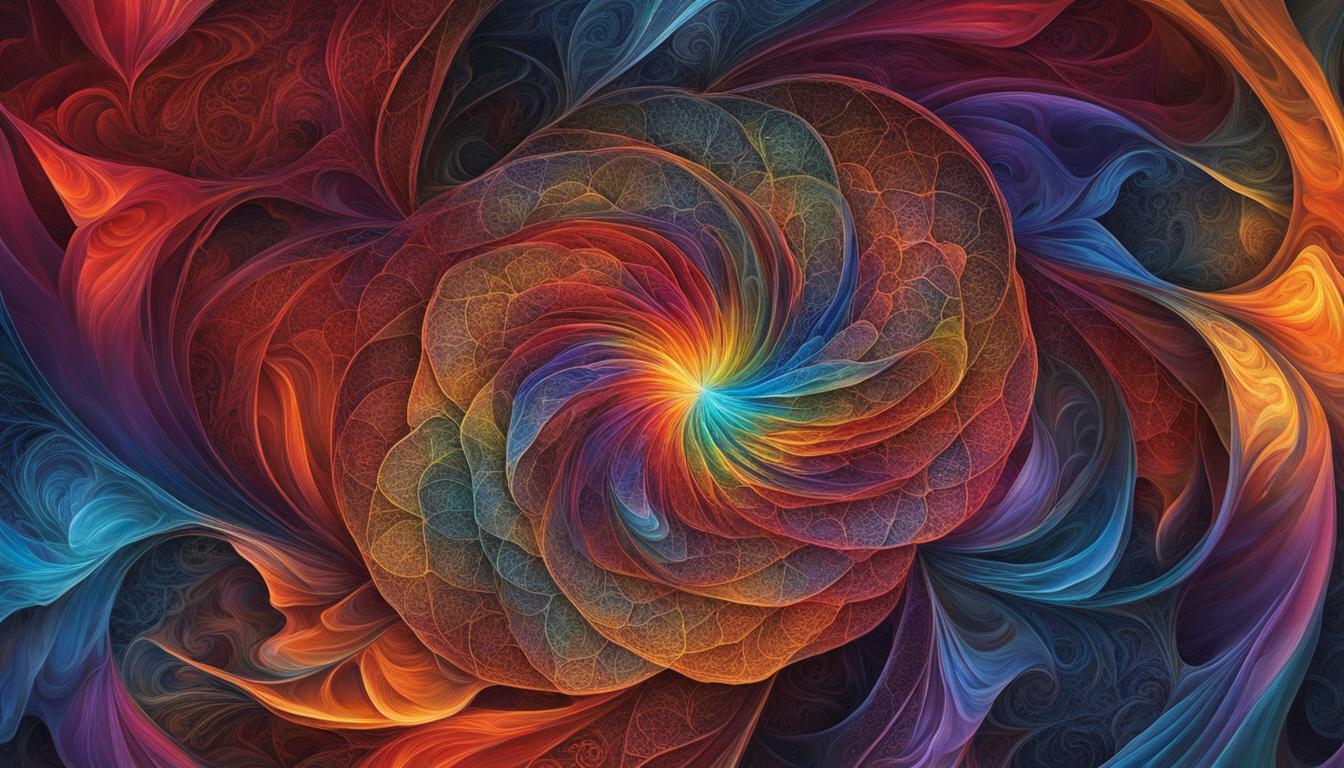
Understanding the combination of aura colors can help us navigate our relationships, connect with others on a deeper level, and appreciate the beautiful tapestry of human energy and personality traits.
Changing and Improving Your Aura
Creating a positive and vibrant aura is essential for overall well-being and spiritual energy. Fortunately, there are various techniques that can help cleanse and enhance your aura, allowing you to radiate positive energy and attract abundance into your life.
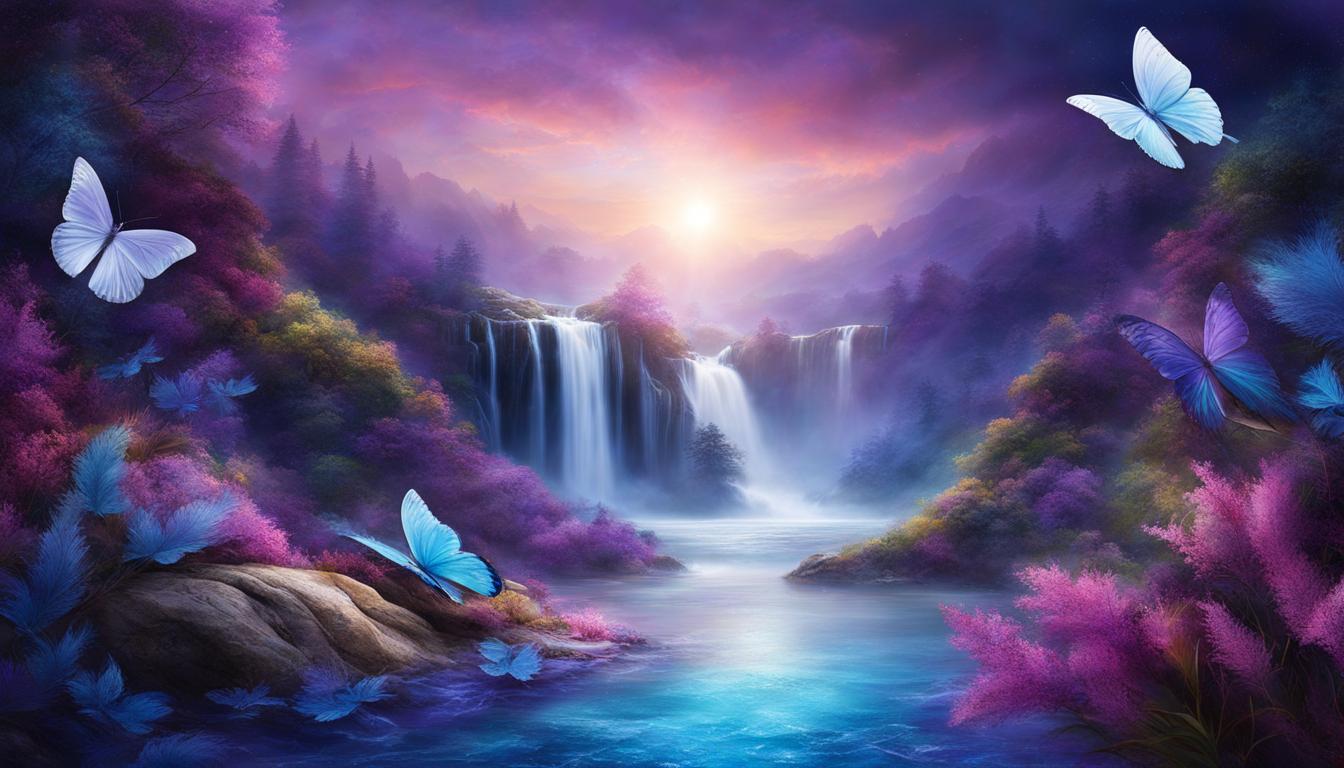
Energy clearing and visualization: To cleanse your aura, try energy clearing techniques such as smudging with sage or using crystals like clear quartz or selenite. Visualize a bright light surrounding your body, purifying and removing any negative energy.
Color therapy: Colors have a profound effect on our energy fields. Incorporate color therapy into your life by surrounding yourself with specific colors that resonate with your desired energies. For example, if you want to boost your confidence, surround yourself with shades of yellow or carry citrine crystals.
Meditation: Engaging in regular meditation practices can promote balance and self-awareness, helping to improve your aura. Find a quiet and peaceful space, focus on your breath, and visualize your aura expanding and becoming vibrant with positive energy.
Surround yourself with positive energy: Surrounding yourself with supportive individuals and positive environments can greatly impact the energy of your aura. Seek out uplifting experiences, spend time in nature, and cultivate healthy relationships that encourage personal growth.
By consciously incorporating these techniques into your daily routine, you can cleanse and improve your aura, allowing you to radiate positive energy and attract abundance into your life.
Conclusion
A gray aura holds important insights about an individual’s emotional state and experiences. It is not inherently good or bad but reflects the journey an individual is on. By understanding the meaning and symbolism of different aura colors and taking steps to improve and align one’s aura, individuals can enhance their overall well-being and spiritual energy.
The understanding of auras, including the gray aura meaning, provides a deeper insight into the spiritual energy and emotional state of individuals. Auras, as invisible energy fields, reflect the physical and emotional aspects of a person’s being. By interpreting aura colors and recognizing their significance, individuals can gain a greater understanding of themselves and others.
Furthermore, recognizing and working with aura colors can have a profound impact on personal growth and spiritual development. By consciously improving and aligning one’s aura, individuals can promote balance, harmony, and positive energy. This can be achieved through cleansing techniques, color therapy, meditation, and surrounding oneself with supportive energy.
In summary, understanding auras, including the gray aura meaning, is a valuable tool for self-discovery and personal growth. By embracing the diverse range of aura colors and their meanings, individuals can gain a deeper understanding of their emotional state and experiences. Through conscious efforts to improve and align their aura, individuals can enhance their overall well-being, spiritual energy, and connection to the world around them.
FAQ
What does a gray aura mean?
A gray aura can have varying shades, indicating different emotional states. A darker gray may signify pessimism and confusion, while a lighter gray suggests a search for hope and light. It reflects the emotional state and experiences of an individual, without being inherently good or bad.
What are auras?
Auras are invisible energy fields that surround the human body and provide information about a person’s emotional and physical state. Each color within the aura corresponds to one of the body’s energy centers known as chakras.
How do aura colors relate to health?
Aura colors are deeply connected to an individual’s health. Bright and clear colors, like green or blue, indicate good health and balance. Dark or muddy colors may suggest low energy levels and poor health.
Can auras be seen with the naked eye?
Auras cannot be seen with the naked eye by most individuals. However, some trained individuals can perceive them. Auras are believed to be energy fields that reflect an individual’s physical and emotional state.
How can I see auras?
Techniques for seeing auras include relaxing the eyes, using peripheral vision, and looking for shifts in color or light around a person or object. Regular practice can enhance the ability to perceive and interpret auras.
What do the primary aura colors mean?
The primary aura colors have specific meanings and symbolism. Red auras signify passion and energy, pink auras represent love and compassion, blue auras indicate serenity and calmness, yellow auras signify positivity and power, orange auras represent creativity and sensuality, indigo auras indicate intuition and insight, green auras represent nurture and growth, and purple auras signify spirituality and consciousness.
What do unique aura colors signify?
Unique aura colors have distinct meanings. A white aura represents balance and calmness, a magenta aura represents spirituality and intuition, a silver aura indicates sensitivity and intuition, a gold aura represents wisdom and confidence, a crystal aura signifies balance and harmony, a brown aura represents grounding and practicality, and a gray aura indicates low energy and sadness.
What do combinations of aura colors mean?
Combinations of aura colors can convey specific energy and personality traits. For example, red and yellow signify high energy and drive, blue and green represent emotional stability and compassion, yellow and orange indicate confidence and charisma, and purple and indigo symbolize spiritual awareness and intuition.
How can I change and improve my aura?
Techniques for changing and improving one’s aura include cleansing techniques, using color therapy, practicing meditation, and surrounding oneself with positive energy and supportive individuals.
How does a gray aura relate to one’s emotional state?
A gray aura holds important insights about an individual’s emotional state and experiences. It reflects the journey they are on and is not inherently good or bad. Understanding the meaning and symbolism of different aura colors can help enhance overall well-being and spiritual energy.


